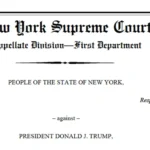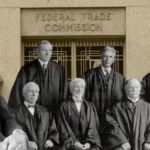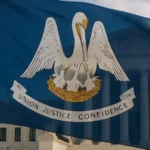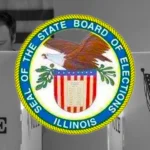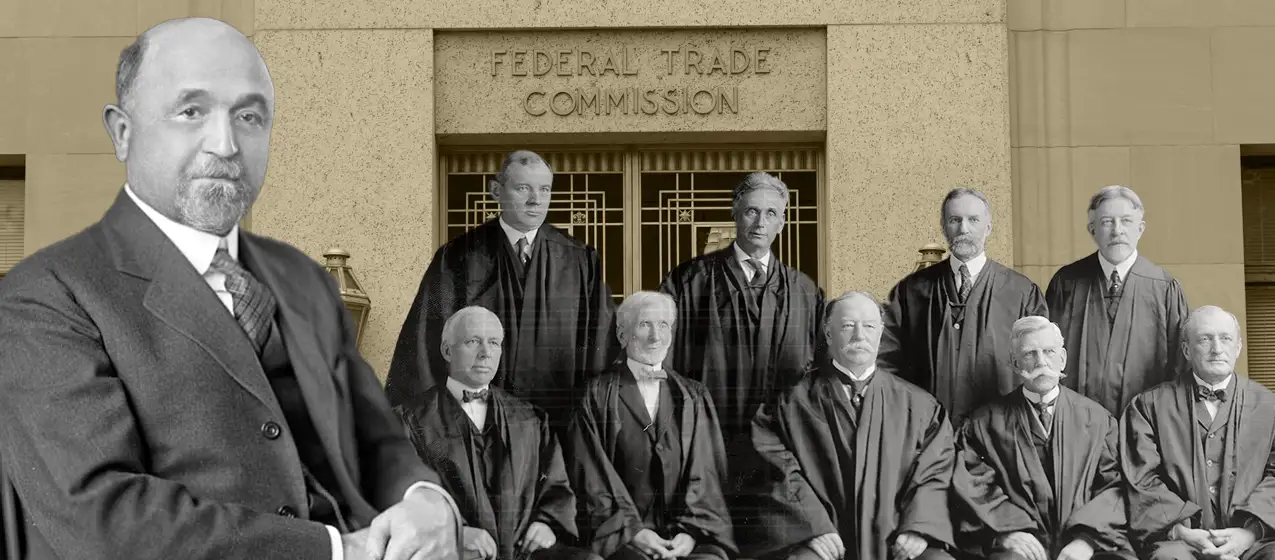
When the Framers of the Constitution designed the Executive Branch, they made the conscious decision to vest its power in a single person, the President. This decision distinguished the Executive Branch from the other branches, Congress and the federal judiciary. But as it currently stands, an expansive, unelected, and unaccountable administrative state chips away at this central design and estranges the people of the United States from the nation’s governance. Faced with an opportunity to correct course, the Supreme Court will hear arguments in Trump v. Slaughter this term. And on October 17th, Landmark filed an amicus curiae brief in support of President Trump’s right to fire Commissioners of the Federal Trade Commission.
This case focuses on the employment protections built into the Federal Trade Commission Act of 1914. Following the Progressive Era vision of a government run by apolitical experts, the law barred the President from firing FTC Commissioners except in cases of “inefficiency, neglect of duty, or malfeasance in office.”
The constitutionality of this provision seemed to be in a precarious position as separation of powers jurisprudence developed in the early Twentieth Century. For example, in 1932 the only man to ever serve as both President and Chief Justice, William Howard Taft, authored Myers v. United States. Myers held that Executive Branch officials could be removed by the President at his discretion and that this was a power Congress could not strip away. This set removal protections for agencies like the FTC on a collision course with the Court. But three years later when the FTC Act’s provisions were eventually considered, Justice Sutherland authored an opinion that upheld these restrictions as legitimate. However, he did so with a very peculiar justification. He found that the FTC was not actually an Executive Branch agency, instead housed under the other branches as a “quasi-legislative or quasi-judicial bod[y].” Humphrey’s Executor v. United States, 295 U.S. 602, 629.
Landmark and other legal conservatives have long disputed this conclusion. In our brief, we explained why we continue to believe that the FTC was an Executive Branch agency in 1935 and remains one now. Its legislative and judicial functions, including occasionally providing reports to Congress and serving as a master of chancery, are clearly secondary to the main purpose of the agency: regulating competitive markets and enforcing antitrust law. These primary roles are quintessentially executive in nature and have been the main purpose for the agency since its founding. And besides the factual issues about the FTC’s nature in Humphrey’s Executor, the decision’s logic has proven to contain major pitfalls as well.
The Humphrey’s Executor Court distinguished its decision from Myers by claiming that Myers applied only to officers engaged in “purely executive power,” leaving open the possibility of insulating administrators exercising mostly or almost entirely Executive Branch power from removal by the Executive. What this amounts to is a major separation of powers violation, wherein Congress can design agencies that operate without oversight through removal by the President so long as they engage in any non-Executive powers. And this issue is not hypothetical. Landmark previously filed a brief in the successful challenge to the structure of the Consumer Financial Protection Bureau, an agency designed primarily by Senator Elizabeth Warren following the 2008 financial crisis. She and others wrote its founding statute so that it would have so little accountability to the elected branches of government that it didn’t even need Congress for its appropriations, instead drawing its funds directly from the Federal Reserve. Brief for Landmark Legal Foundation as Amicus Curiae Supporting Petitioner, Seila Law LLC v. Consumer Financial Protection Bureau, 591 U.S. 197 (2020); 12 U.S.C. § 5497 (2010).
Landmark also raised the issue of highly partisan appointments over the past several decades. Humphrey’s Executor justified sharply limiting Myers with a broad exemption for officers ostensibly exercising non-Executive power like FTC Commissioners by describing the FTC as a nonpartisan body of experts. This has not proven to be the case. The FTC is routinely dominated by lawyers without technical economic and business experience who have deep ties to their respective party’s Senators. Of course, there have been exceptions to this rule, but they are few and far between. On the specific point of partisanship, we mentioned in the brief that since the Kennedy Administration over sixty years ago, only three FTC Commissioners have served independently of a political party. What this all means is that appointments to the FTC and similar bodies do not differ so substantially from other political appointments as to justify a massive departure from the Myers standard and the separation of powers broadly.
This case, Trump v. Slaughter, will be argued on December 8 at the Supreme Court, with a decision expected by the end of the term in Summer 2026. Landmark urges the Court to restore the accountability of administrative state officials like FTC Commissioners to the people and their representatives. Humphrey’s Executor should be overturned.
Read Landmark’s brief in Trump v. Slaughter here, and read our past Supreme Court briefs on this topic here and here.
SUPPORT LANDMARK LEGAL FOUNDATION
We are truly facing existential threats to our individual rights and liberties, the Constitution, and our national character. If unchallenged, this assault on our very way of life will ruin our great nation. With your financial and moral support, Landmark is not going to let that happen without a fight. Will you join us?
JOIN OUR MAILING LIST
Never miss an update from Landmark Legal Foundation as we continue the fight to preserve America’s principles and defend the Constitution from the radical left.

